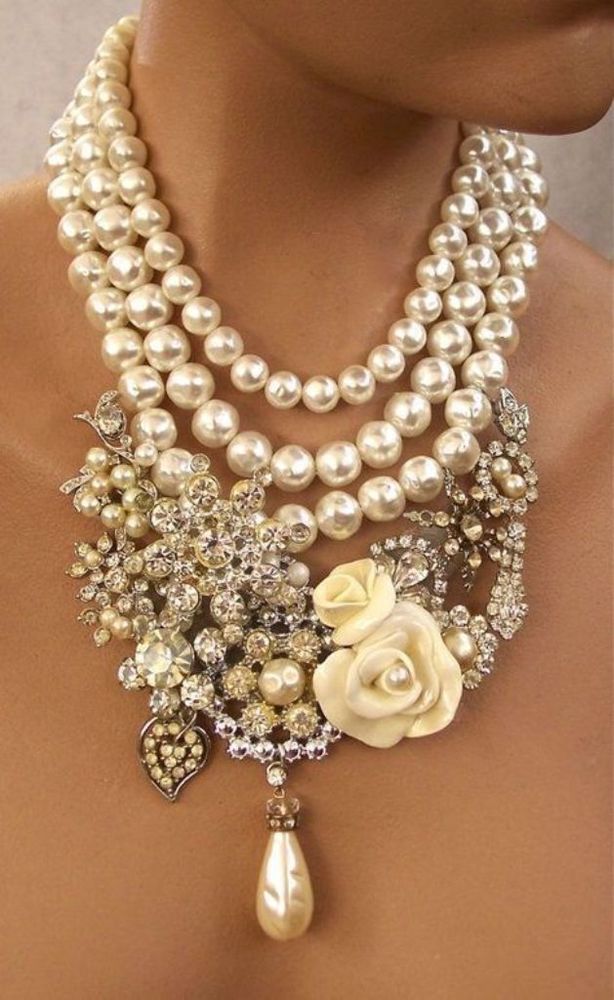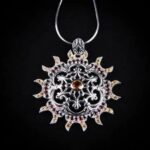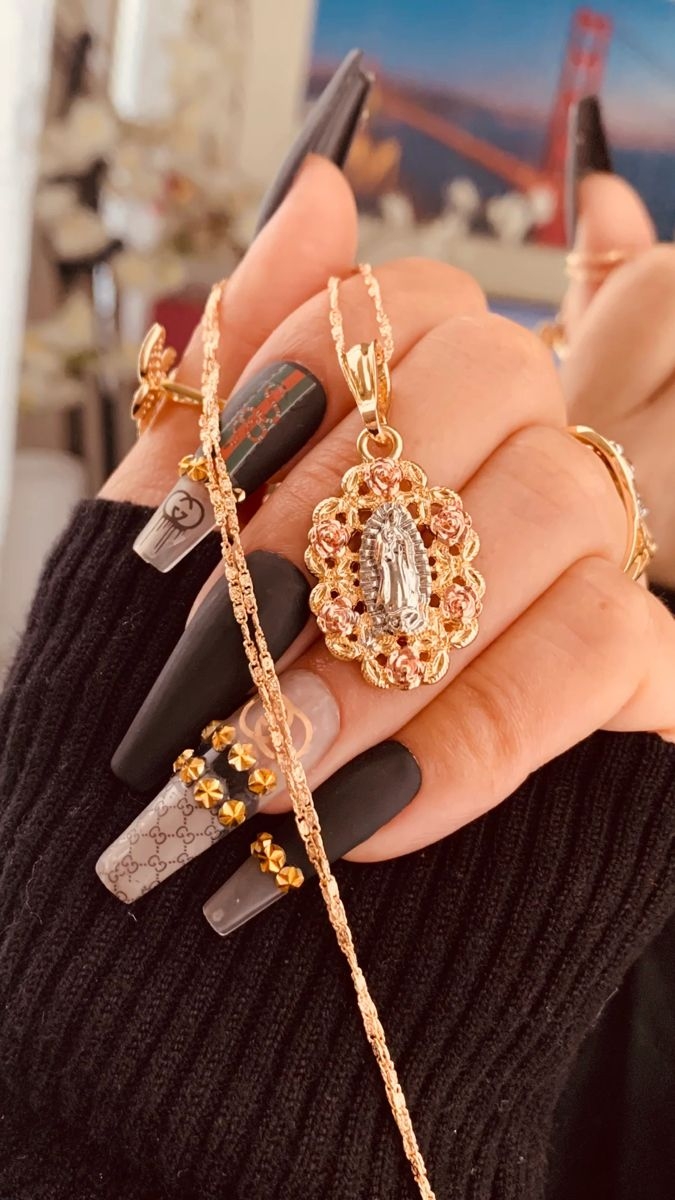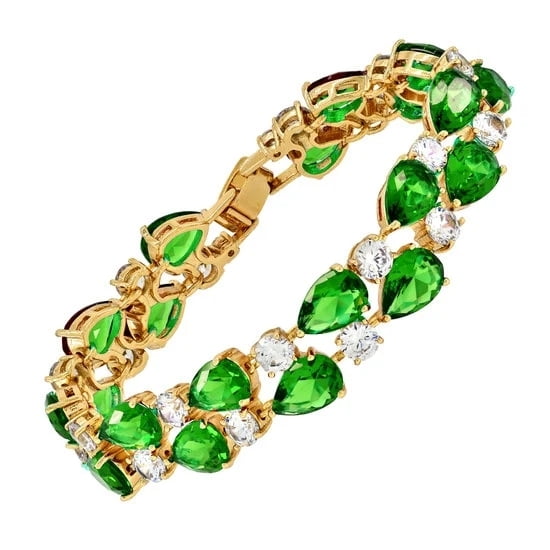What are interests in selling fine jewelry? The allure of luxury accessories such as fine jewelry has captivated individuals for centuries, with its timeless appeal and exquisite craftsmanship. Understanding the market and identifying the target audience is crucial when it comes to selling these highly coveted pieces. Crafting fine jewelry involves an intricate process that results in creating stunning and valuable items, making it a fascinating niche to be involved in.
Delving into the world of fine jewelry unveils the high worth of these accessories, attributed to various factors such as the quality of materials used, the craftsmanship involved, and the brand’s reputation. Exploring effective sales strategies is essential for those looking to successfully navigate the competitive market of luxury accessories. Establishing a strong and reputable brand presence also plays a significant role in creating a distinguished position within the fine jewelry industry.
However, selling fine jewelry also comes with its own set of challenges that need to be addressed and overcome. Navigating through these obstacles is essential for those aspiring to become key players in this dynamic market. Looking ahead, examining emerging trends and opportunities can provide insights into the future of the luxury accessories market, offering valuable information for individuals interested in selling fine jewelry.
Understanding the Market
The first step in selling fine jewelry is to understand the market and identify the target audience. The target audience for fine jewelry is typically individuals who appreciate luxury items, have a high disposable income, and value quality and craftsmanship. These individuals are often looking for unique, one-of-a-kind pieces that reflect their personal style and status.
According to a study by McKinsey & Company, the global fine jewelry market is expected to reach $292 billion by 2025, with significant growth driven by emerging markets such as China and India. This data highlights the potential for selling fine jewelry, especially in regions where there is a growing number of affluent consumers with an interest in luxury goods.
Another key aspect of understanding the market for selling fine jewelry is recognizing the importance of building relationships with customers. Whether it’s through in-store consultations or online interactions, establishing trust and rapport with potential buyers can pave the way for successful sales transactions. Additionally, leveraging social media platforms to engage with the target audience and showcase fine jewelry collections can be an effective strategy in reaching potential buyers.
Based on this information, it’s clear that understanding the market for selling fine jewelry requires a combination of market research, identifying consumer trends, and building strong relationships with potential buyers. By focusing on these key areas, sellers can better position themselves to cater to their target audience and drive sales in the competitive luxury accessories market.
| Market | Data |
|---|---|
| Global Fine Jewelry Market Size (2025) | $292 billion |
| Projected Growth Markets | China and India |
The Art of Crafting Fine Jewelry
Crafting fine jewelry is a meticulous art form that requires precision, skill, and creativity. From the initial design concept to the final finishing touches, the process of creating exquisite pieces is truly a labor of love.
Design and Concept
The journey of crafting fine jewelry begins with a vision or inspiration for a new piece. Designers often draw from various influences such as nature, architecture, or historical periods to create unique and captivating designs. Whether it’s sketching by hand or using computer-aided design (CAD) software, the process of conceptualizing a new piece involves careful consideration of aesthetics, functionality, and the target audience.
Materials and Production
Once the design is finalized, attention turns to sourcing high-quality materials such as diamonds, gemstones, and precious metals. Skilled artisans then meticulously shape and assemble these materials into the desired form, often incorporating intricate detailing and craftsmanship techniques such as enameling or filigree work. The production stage may involve multiple steps including casting, stone setting, polishing, and quality control to ensure that each piece meets the highest standards of excellence.
The Human Touch
One of the most distinguishing aspects of crafting fine jewelry is the human touch that goes into every step of the process. Unlike mass-produced items, each piece of fine jewelry is carefully crafted by highly skilled artisans who bring their expertise and passion to their work. This personal investment in every piece adds an intangible value that resonates with discerning customers who appreciate artistry and individuality in their luxury accessories.
Aspiring professionals who are interested in selling fine jewelry should familiarize themselves with this intricate process in order to effectively communicate its value to potential customers. Understanding the dedication and artistry behind each piece can be a compelling selling point for those seeking unique and exceptional luxury accessories.
Unveiling the Value
Fine jewelry holds a significant value due to various factors that contribute to its high worth. One of the main reasons for the high value of fine jewelry is the use of precious metals and gemstones in its creation.
Materials such as gold, platinum, diamonds, sapphires, and rubies are highly sought after for their rarity and durability, making them desirable for crafting exquisite pieces of jewelry. The scarcity of these materials adds to their overall value, making fine jewelry an investment for many individuals.
Another factor that contributes to the high worth of fine jewelry is the craftsmanship involved in creating each piece. Skilled artisans and jewelers dedicate hours, and sometimes even days or weeks, to meticulously design and produce fine jewelry. The intricate details and precision in crafting these pieces elevates their value as they are perceived as works of art. This level of quality and attention to detail is what distinguishes fine jewelry from mass-produced accessories.
In addition to materials and craftsmanship, the reputation and history of a particular jewelry brand also play a significant role in determining the value of fine jewelry. Established brands with a long-standing legacy often command higher prices due to their brand recognition, quality standards, and unique designs. Consumers are willing to invest more in pieces from reputable brands because of the assurance of authenticity and superior craftsmanship that comes with it.
| Factors Contributing to High Worth | Description |
|---|---|
| Use of Precious Materials | The rarity and durability of precious metals and gemstones add to the overall value of fine jewelry. |
| Craftsmanship | The meticulous design process and skilled artisanship elevate the value of fine jewelry as works of art. |
| Brand Reputation | Established brands with a long-standing legacy command higher prices due to brand recognition, quality standards, and unique designs. |
Sales Strategies
Selling fine jewelry requires strategic and effective tactics to reach the right audience and maximize sales. Whether you are an established jeweler or a newcomer to the industry, understanding the key sales strategies can significantly impact your success in selling luxury accessories.
Targeting the Right Audience
One of the crucial elements in selling fine jewelry is identifying and understanding your target audience. This involves researching and analyzing demographics, lifestyles, and purchasing behaviors of potential customers. By knowing who your ideal customers are, you can tailor your marketing efforts and product offerings to appeal to their preferences and needs. Whether it’s high-end consumers with a penchant for exclusive pieces or individuals seeking everyday luxury items, creating a targeted approach will enhance your sales strategy.
Building Relationships and Trust
In the world of fine jewelry, building genuine relationships with customers is paramount. Establishing trust through exceptional customer service, personalized consultations, and transparent communication can set you apart from competitors. Encouraging repeat business and fostering loyalty among clients can result in long-term success in selling fine jewelry.
Utilizing Multi-Channel Marketing
In today’s digital age, leveraging multiple marketing channels is essential for reaching a wider audience. Utilize social media platforms, e-commerce websites, and traditional advertising methods to showcase your fine jewelry collection. Engaging with potential customers through compelling content, stunning visuals, and educational resources can attract new leads and drive sales.
Additionally, participating in prestigious industry events or collaborating with fashion influencers can elevate brand visibility and credibility. By utilizing a multi-channel marketing approach, you can increase brand awareness and ultimately boost sales of fine jewelry.
By implementing these effective sales strategies, sellers of fine jewelry can enhance their market presence, connect with their target audience, establish trust with customers, and ultimately achieve greater success in selling luxury accessories.
The Importance of Branding
Establishing a strong and reputable brand in the fine jewelry industry is crucial for success in selling luxury accessories. A well-defined brand identity can differentiate a jewelry business from its competitors, create a loyal customer base, and increase the perceived value of the products. When it comes to fine jewelry, branding goes beyond just a logo and a tagline; it encompasses the overall image, values, and story of the brand.
One of the key aspects of branding in the fine jewelry industry is building a narrative that resonates with the target audience. This involves creating a compelling story behind the brand, whether it’s about artisanal craftsmanship, ethically sourced materials, or a meaningful inspiration behind each collection. By telling an authentic story, fine jewelry brands can establish an emotional connection with customers, making their pieces more than just accessories but also works of art with sentimental value.
Another important element of branding in the fine jewelry industry is maintaining consistent quality and design aesthetic. Fine jewelry buyers are often looking for pieces that reflect timeless elegance and impeccable craftsmanship. Therefore, establishing a reputation for consistently delivering high-quality products is essential for building trust and credibility within the market. Additionally, having a distinct design aesthetic that sets the brand apart can make it easily recognizable and help to attract discerning customers who appreciate unique and exceptional pieces.
Navigating the Challenges
When it comes to selling fine jewelry, there are some common obstacles that individuals may face. Overcoming these challenges is crucial for success in the luxury accessories market. Here are some of the most prevalent hurdles and strategies to conquer them:
1. Targeting the right audience: One of the main challenges in selling fine jewelry is identifying and reaching the appropriate target market. Luxury accessories often appeal to a specific demographic with discerning tastes and high purchasing power. To overcome this obstacle, it’s essential to conduct thorough market research and develop a clear understanding of the potential consumers for your jewelry pieces.
2. Building trust and credibility: Establishing credibility and gaining the trust of customers is pivotal in the fine jewelry industry. Buyers seek assurance that they are investing in authentic, high-quality pieces when purchasing luxury jewelry. Overcoming this challenge involves building a reputable brand, providing certifications for gemstones and precious metals, and offering excellent customer service to instill confidence in potential buyers.
3. Staying competitive: With an abundance of fine jewelry brands in the market, standing out from competitors can be challenging. To overcome this obstacle, implementing effective sales strategies such as creating unique marketing campaigns, offering personalized experiences, or collaborating with influencers can help set your brand apart from others.
Overall, navigating the challenges of selling fine jewelry requires a deep understanding of the industry, dedication to quality and craftsmanship, as well as innovative approaches to reach and engage potential customers.
The Future of Fine Jewelry
In conclusion, the future of selling fine jewelry holds promising opportunities for those in the luxury accessories market. As emerging trends continue to shape consumer preferences, there is an increasing demand for unique and personalized pieces that reflect individual style and craftsmanship. By understanding the market and identifying the target audience, sellers can position themselves to capitalize on these trends and meet the evolving needs of their customers.
Furthermore, crafting fine jewelry remains an art that requires skill, creativity, and precision. The intricate process of creating exquisite pieces adds value and allure to luxury accessories, making them highly sought after by discerning buyers. As sellers navigate the challenges of establishing a strong brand and overcoming obstacles in the industry, it is essential to uphold the standards of quality and excellence that define fine jewelry.
As technology continues to drive innovation in the luxury accessories market, sales strategies must adapt to meet the changing landscape of consumer behavior. With a focus on digital marketing, e-commerce platforms, and omnichannel retail experiences, sellers can reach a wider audience and connect with potential buyers on a global scale.
In doing so, they can expand their reach and elevate their brand presence in the competitive world of fine jewelry sales. Ultimately, staying attuned to emerging trends and embracing new opportunities will be key in thriving as a seller of fine jewelry in the years to come.
Frequently Asked Questions
Why Do You Want to Sell Jewelry?
I want to sell jewelry because I have a passion for beautiful and unique pieces. Jewelry holds both sentimental and aesthetic value, and I enjoy being able to share that with others. Selling jewelry also allows me to connect with customers and help them find the perfect piece that speaks to them.
How Do You Describe Jewelry When Selling?
When selling jewelry, I describe the pieces in a way that highlights their craftsmanship, materials used, and any special or unique features. I also emphasize the emotions and meanings that can be attached to each piece, whether it’s a gift for someone special or an item of personal significance.
It’s important to convey the quality and beauty of the jewelry in a way that resonates with potential buyers.
Who Is Interested in Jewelry?
There is a wide range of people who are interested in jewelry, from those shopping for special occasions like weddings or anniversaries, to collectors looking for unique and rare pieces. Additionally, many people simply appreciate wearing jewelry as a form of self-expression or as an accessory to enhance their personal style.
Ultimately, anyone who appreciates artistry, craftsmanship, and the beauty of adornment can be interested in jewelry.

Welcome to my jewelry blog! My name is Sarah and I am the owner of this blog.
I love making jewelry and sharing my creations with others.
So whether you’re someone who loves wearing jewelry yourself or simply enjoys learning about it, be sure to check out my blog for insightful posts on everything related to this exciting topic!





